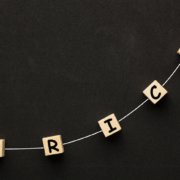3 Pricing Strategies to Grow Rate, Grow Occupancy – or Both!
There are many traditional pricing models offered by senior living operators in an effort to grow rate and increase occupancy. There are no right or wrong answers as long as the strategy is in alignment with your goals. Generally, pricing strategy is directly related to the stability of occupancy. With a higher occupancy, operators can push rate. When occupancy declines, incentives may be offered to boost occupancy and that erodes RPU. The balance is in knowing when to turn the rate and incentive levers and to be flexible and proactive enough to make regular adjustments. Pricing is not something that operators can do once a year during budget season and then forget about.
Pricing That Offers a Greater Price Range for Prospects without Eroding Rate
Value/ Premium Pricing
This strategy allows a pricing spread throughout the community that offers greater pricing elasticity to meet a wider range of financial options for prospects without eroding rate/ RPU. Apartments with a premium location (near an elevator, on the first floor, near dining room etc.), premium view or with premium amenities (upgrades, closet space square footage) are priced at higher rates. Apartments with undesirable locations (end of long hallways, upper floors), undesirable views (parking lot, dumpster, mechanical units) or with a lack of amenities (dark, small, limited closet space) are priced at lower rates. This strategy allows 3 price points for each apartment type – standard, premium, and value so the overall community still achieves the average rate while offering a greater range of pricing options.
Variable Pricing
Much like paying points on a mortgage, the greater the upfront move-in fee, the lower the monthly base rent. For example, for every $2000 more paid up front, the resident base rent is reduced by $200. This gives the community good cash flow up front, and the advantage for the resident is that the investment is paid back within 10 months. Then all future increases are based on the lower rate.
This strategy provides solutions for prospects who:
- Have good liquidity from the sale of their home or from strong investments, but they do not have much income (they can put up a large move-in fee and buy down their monthly price that is within their income range).
- Have a strong income, but do not have upfront cash (waiting to sell their home, money tied up in annuities, CDs or other investment).
Companion Living
In addition to “purpose built” companion apartments, this strategy creates companion living apartments out of studio, alcove, and traditionally private one & two bedroom apartments. The companion price is set between 55 – 65% of the private rate for each resident. It creates a very low price point, which is attractive to residents who would traditionally be financially disqualified. It provides the community with 110 – 130% of the private rent revenue and two LOCs.
To be successful, the community needs to set up companion model apartments to show how a small space can work for two unrelated residents. It may also require some form of divider for privacy.
There are probably many other great ideas out there! Are there other creative pricing strategies you have used successfully to balance the growth of both rate and occupancy? Let’s Chat



